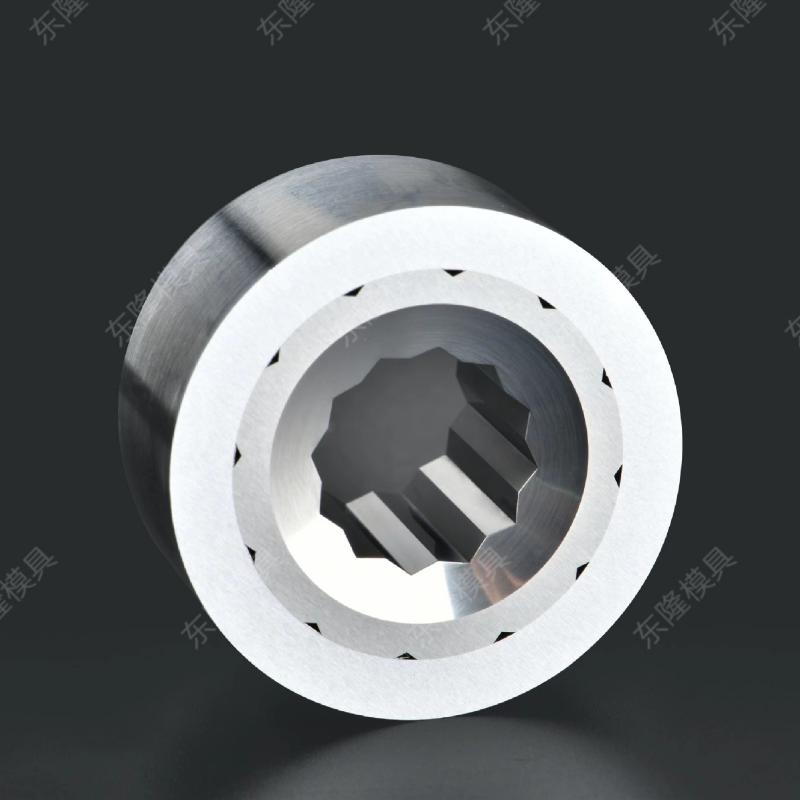 Hot Heading Dies are specialized tooling components used in metal forming processes, particularly in the manufacturing of fasteners, bolts, and other precision metal parts. These dies operate at elevated temperatures (typically between 200°C to 900°C) to facilitate the plastic deformation of metal workpieces. The hot heading process allows for the production of complex geometries with material savings of 20-40% compared to machining operations, while achieving tolerances as tight as ±0.05mm for critical dimensions.
Hot Heading Dies are specialized tooling components used in metal forming processes, particularly in the manufacturing of fasteners, bolts, and other precision metal parts. These dies operate at elevated temperatures (typically between 200°C to 900°C) to facilitate the plastic deformation of metal workpieces. The hot heading process allows for the production of complex geometries with material savings of 20-40% compared to machining operations, while achieving tolerances as tight as ±0.05mm for critical dimensions.
Key Characteristics of Hot Heading Dies
1. High Temperature Resistance
Hot Heading Dies are constructed from premium tool steels such as H13 (DIN 1.2344) or H11 (DIN 1.2343), which maintain their structural integrity at operating temperatures up to 600°C. These materials exhibit excellent hot hardness (45-52 HRC at 500°C) and thermal fatigue resistance, withstanding 50,000-100,000 cycles before requiring refurbishment.
2. Precision Engineering
The dies feature ground surfaces with surface finishes of 0.2-0.4 μm Ra to minimize friction and material sticking. Critical dimensions are held to IT7-IT8 grade tolerances, with concentricity requirements often below 0.01mm TIR for high-speed applications running at 100-300 strokes per minute.
3. Optimized Cooling Channels
Advanced Hot Heading Dies incorporate precisely machined cooling channels that maintain optimal die temperatures within ±5°C of setpoint. These channels are typically spaced at 10-15mm intervals and use water-based coolants flowing at 5-10 liters per minute to achieve uniform heat extraction.
4. Wear Resistance
Critical wear surfaces often receive surface treatments such as TiN (Titanium Nitride) or CrN (Chromium Nitride) coatings, increasing surface hardness to 2000-3000 HV and extending tool life by 300-500% compared to uncoated dies.
Primary Applications of Hot Heading Dies
1. Automotive Fastener Production
Hot heading dies manufacture 60-70% of all automotive fasteners, including engine bolts, wheel studs, and suspension components. The process achieves tensile strengths of 800-1200 MPa in finished parts, meeting ISO 898-1 Class 10.9 and 12.9 specifications.
2. Aerospace Components
Specialized hot heading dies form high-strength titanium and nickel alloy fasteners with grain flow optimization that improves fatigue life by 40-60% compared to machined alternatives. These dies operate at 700-900°C to work difficult-to-form materials.
3. Construction Hardware
Large diameter anchor bolts and structural fasteners up to M64 size are produced using hot heading dies with 500-1000 ton capacity machines. The process achieves 95-98% material utilization for these high-volume components.
4. Specialized Industrial Fasteners
Unique geometries like shoulder bolts, stepped shafts, and flanged components are formed using multi-station hot heading dies that can perform 3-5 forming operations in a single machine cycle, reducing production time by 70-80% versus conventional methods.
Maintenance Procedures for Hot Heading Dies
1. Routine Cleaning
After each production run (typically 8-12 hours), dies should be cleaned using non-chlorinated solvents and soft brass brushes. Ultrasonic cleaning at 40-60 kHz for 15-20 minutes effectively removes microscopic debris.
2. Temperature Management
Implement controlled heating and cooling cycles with ramp rates below 100°C/hour to prevent thermal shock. Use infrared thermography to verify temperature uniformity within ±10°C across the die face.
3. Lubrication Protocol
Apply high-temperature lubricants (graphite-based or synthetic) at 15-30 minute intervals. Maintain lubricant viscosity between 80-120 cSt at 40°C for optimal performance.
4. Dimensional Inspection
Measure critical dimensions weekly using CMM (Coordinate Measuring Machines) with 2-5 μm accuracy. Track wear patterns and schedule rework when dimensions exceed 0.5% of nominal values.
5. Surface Treatment Renewal
Reapply protective coatings after 50,000-150,000 cycles, depending on material and process conditions. Perform microhardness testing (HV0.3 scale) to verify coating integrity before reuse.
Advanced Maintenance Techniques
For critical applications, implement:
Laser cladding for localized die repair with 0.1mm precision
Residual stress analysis using X-ray diffraction methods
Finite element analysis (FEA) to predict fatigue life and optimize maintenance intervals
Automated die monitoring systems tracking temperature, vibration, and forming force in real-time
Storage and Handling Best Practices
When not in use, hot heading dies should be stored in temperature-controlled environments (20-25°C) with 40-50% relative humidity. Use VCI (Vapor Corrosion Inhibitor) paper for wrapping and place in dedicated closed-cell foam-lined containers. Always handle dies with clean, lint-free gloves to prevent contamination of precision surfaces.











